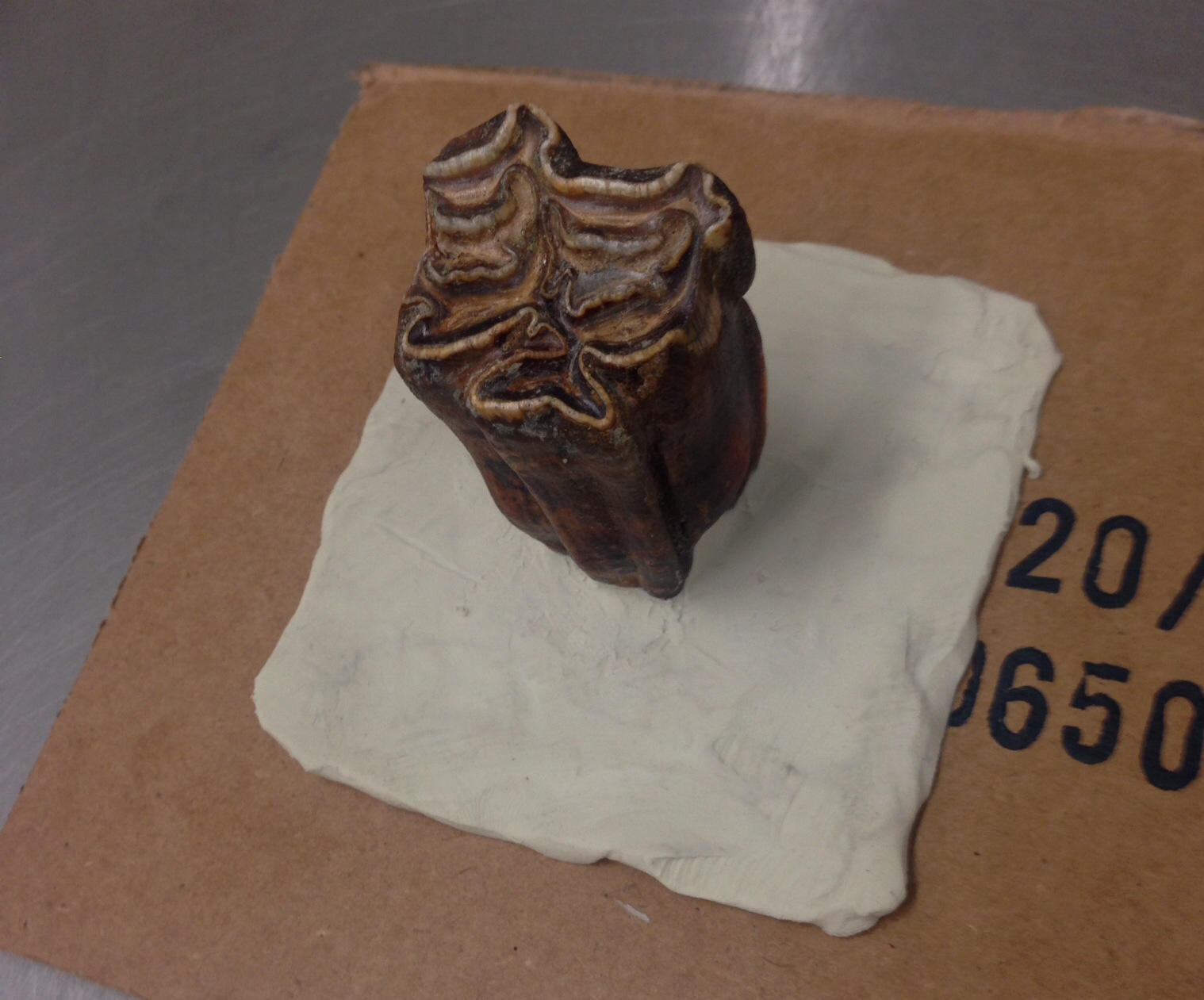 When I was at the Virginia Museum of Natural History, one of our most successful endeavors was an active molding and casting program to produce replicas of fossils in the VMNH collection. After moving to the Western Science Center one of my top priorities was to start a comparable program here, and I'm happy to report that our casting efforts are now underway.Since the WSC staff is still learning how to make molds, we chose some Pleistocene horse teeth for our first molds. These teeth are relatively tough and they have a pretty simple overall shape, so they stand up to molding well. After sealing cracks in the tooth and attaching it to a clay base (above), we built a box (made of either clay or, in this case, Legos) around the specimen:
When I was at the Virginia Museum of Natural History, one of our most successful endeavors was an active molding and casting program to produce replicas of fossils in the VMNH collection. After moving to the Western Science Center one of my top priorities was to start a comparable program here, and I'm happy to report that our casting efforts are now underway.Since the WSC staff is still learning how to make molds, we chose some Pleistocene horse teeth for our first molds. These teeth are relatively tough and they have a pretty simple overall shape, so they stand up to molding well. After sealing cracks in the tooth and attaching it to a clay base (above), we built a box (made of either clay or, in this case, Legos) around the specimen:
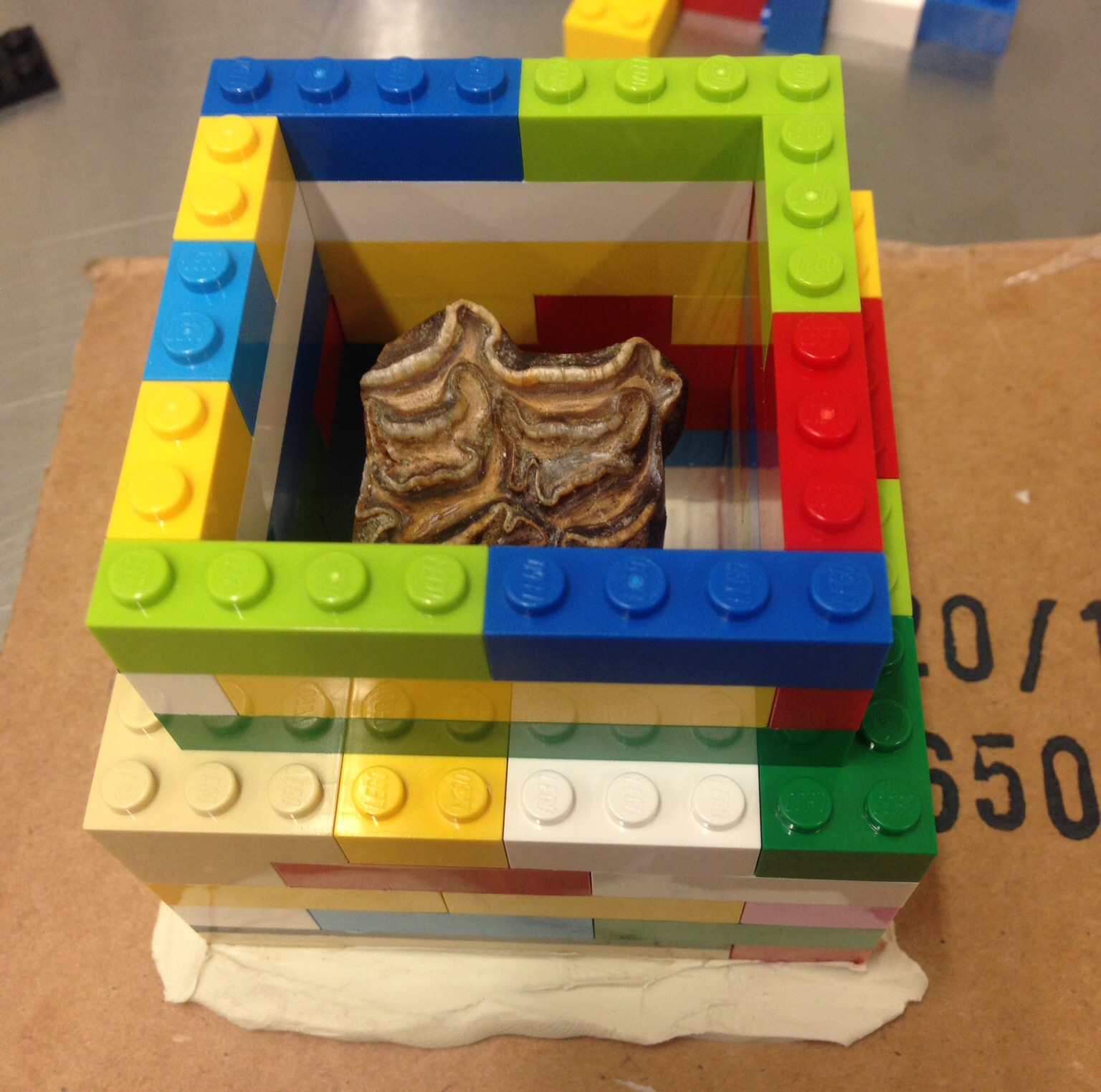 Once the box is built and sealed, we can pour liquid silicone over the specimen (being done here by our Collections Manager, Darla Radford):
Once the box is built and sealed, we can pour liquid silicone over the specimen (being done here by our Collections Manager, Darla Radford):
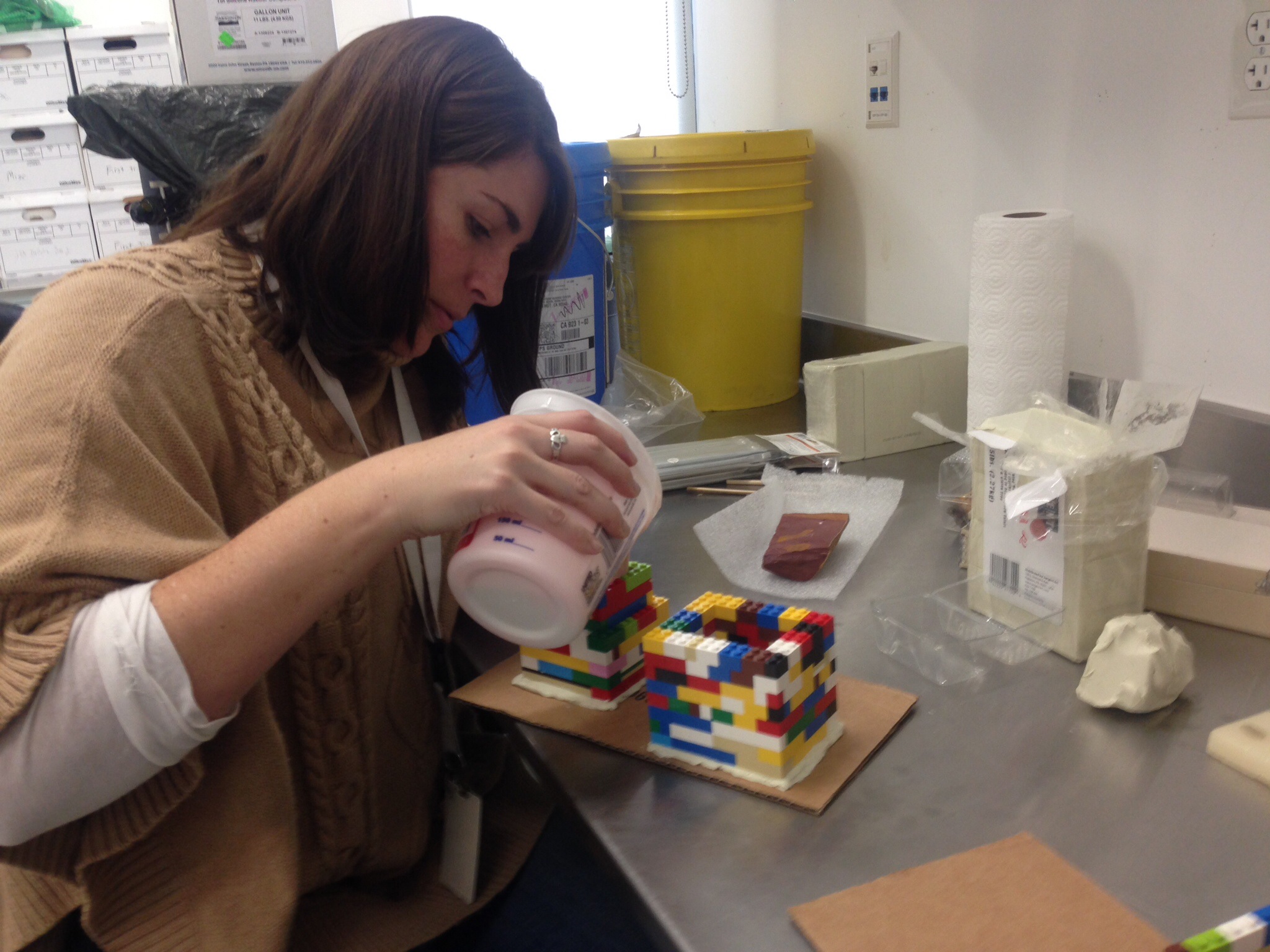 Once the silicone is cured, the fossil can be removed from the mold, and liquid resin can be mixed and poured in:
Once the silicone is cured, the fossil can be removed from the mold, and liquid resin can be mixed and poured in:
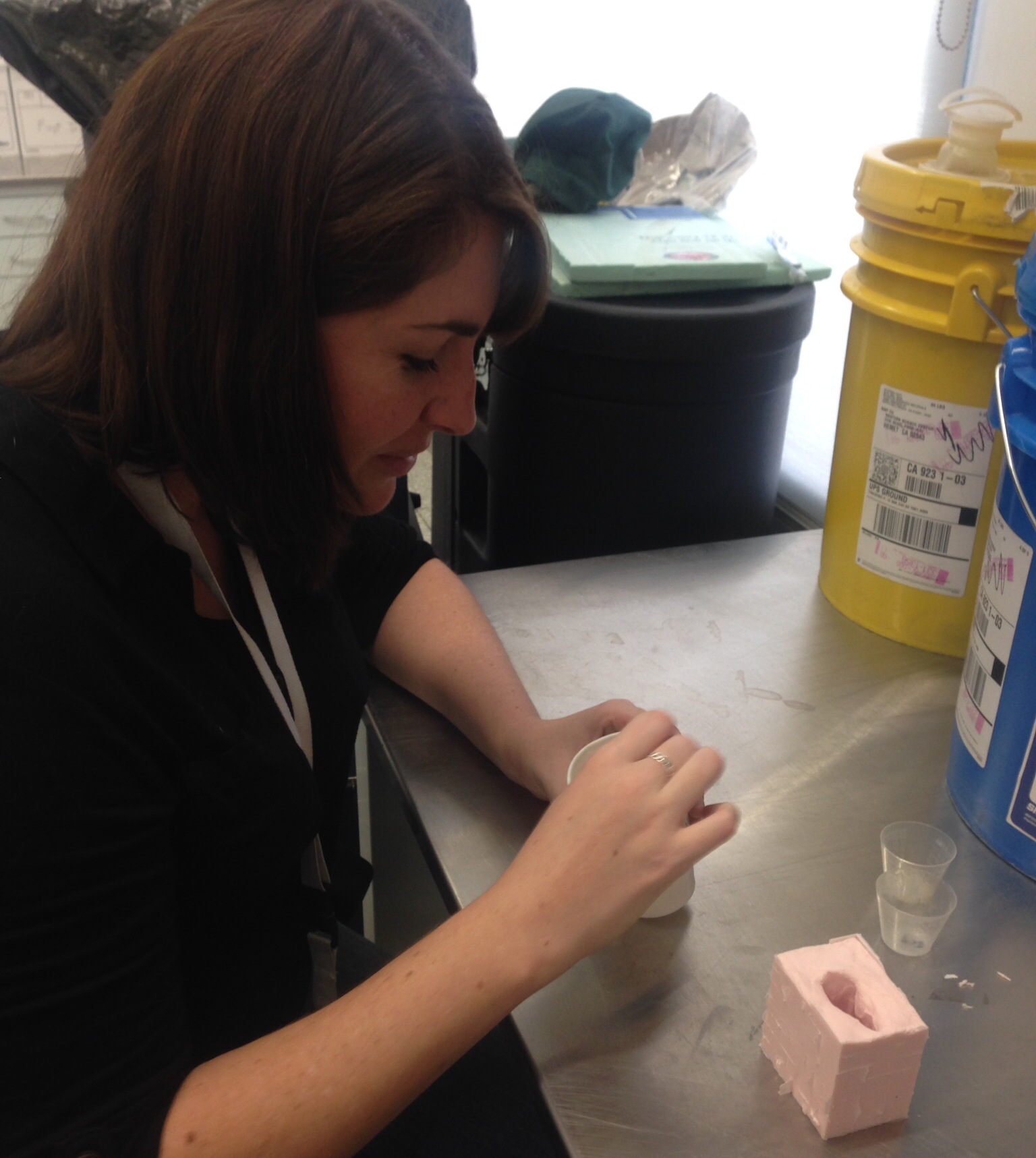 When the resin is cured, the resulting cast can be removed (two different horse teeth shown here):
When the resin is cured, the resulting cast can be removed (two different horse teeth shown here):
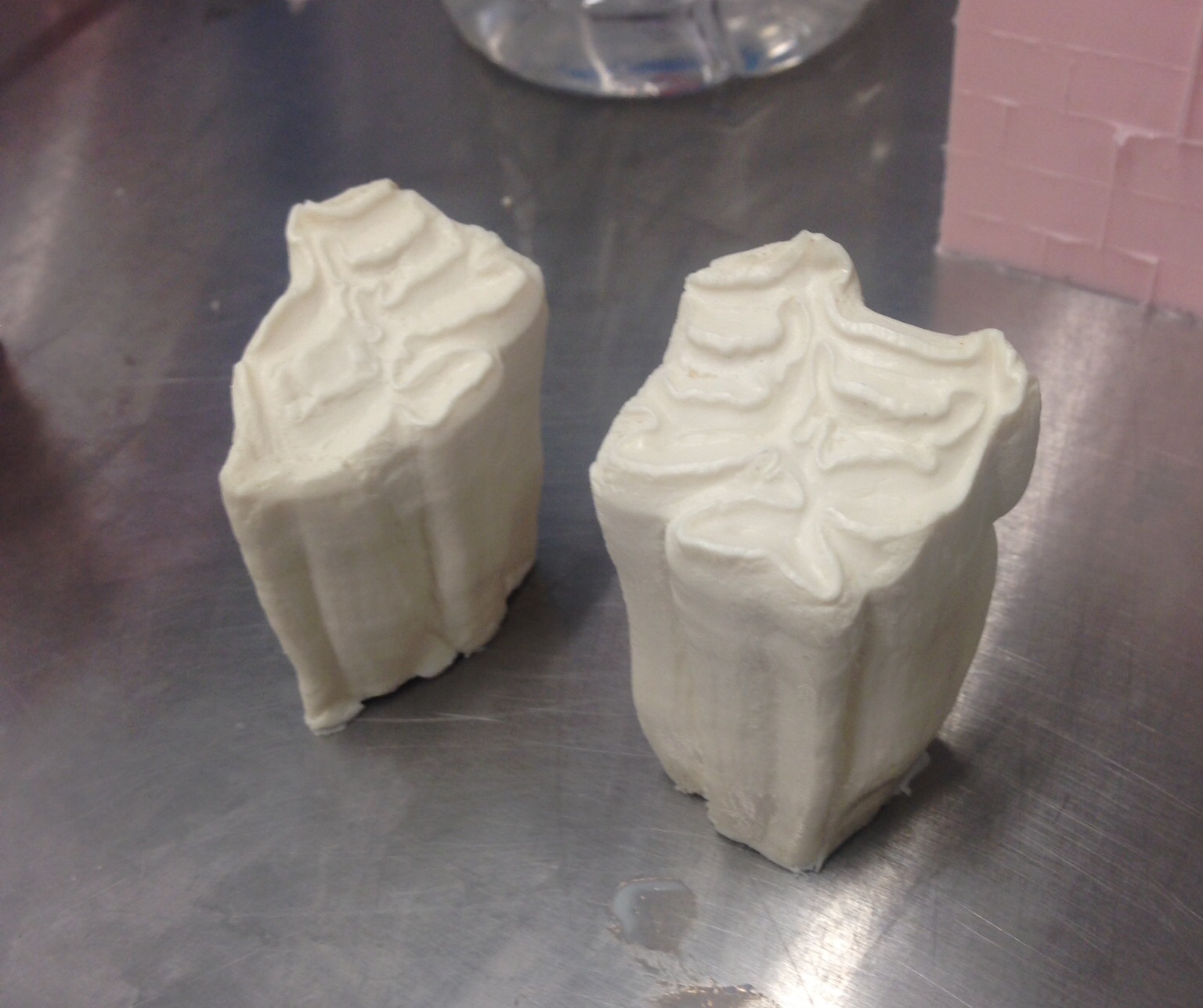 At this point the cast is ready for painting, to resemble the original fossil:
At this point the cast is ready for painting, to resemble the original fossil:
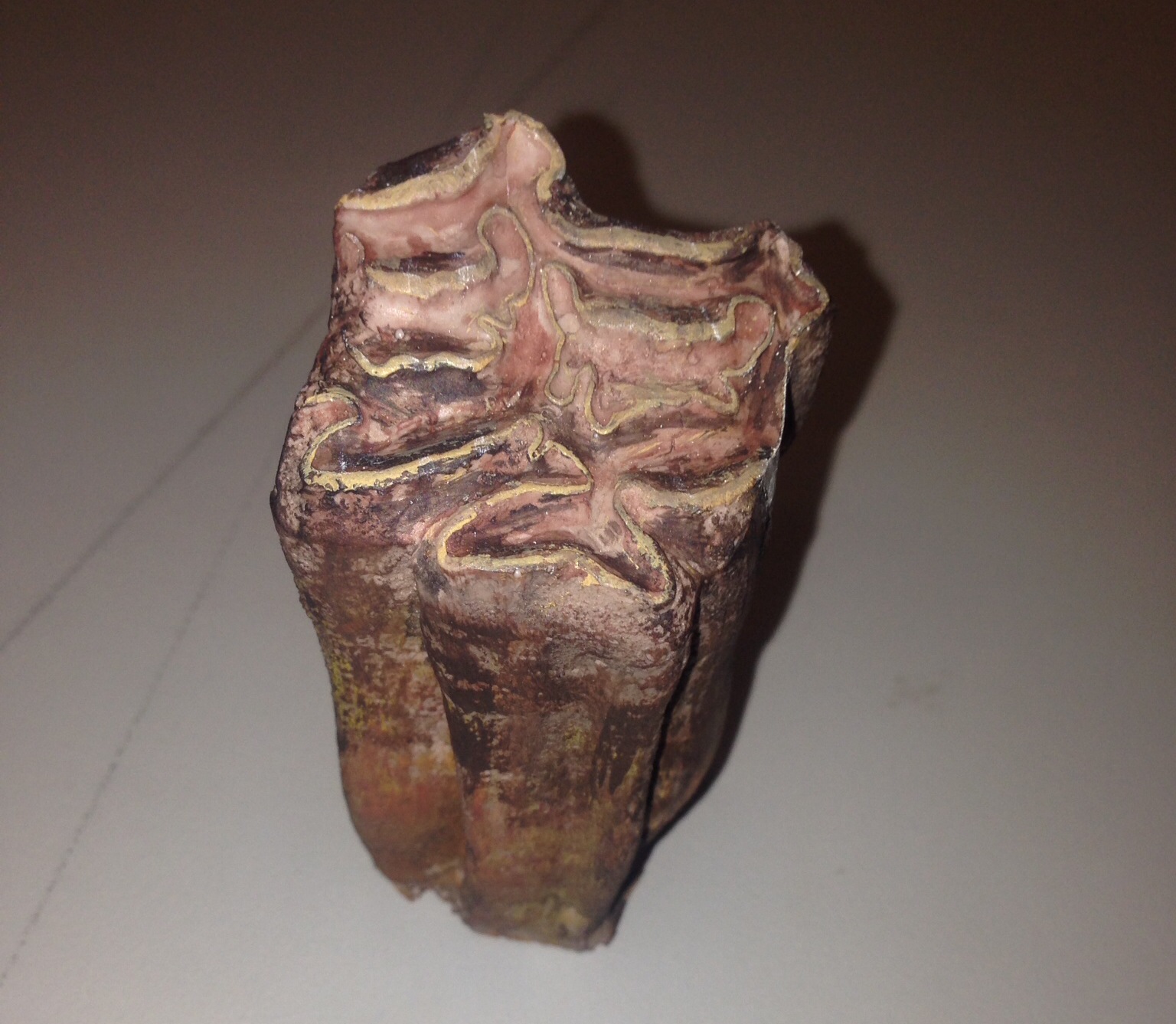 Establishing a casting program will greatly expand the things WSC can do with its collections in terms of exhibits and educational programs. Some of these hand-painted replicas will also be available in the museum's gift shop.
Establishing a casting program will greatly expand the things WSC can do with its collections in terms of exhibits and educational programs. Some of these hand-painted replicas will also be available in the museum's gift shop.
